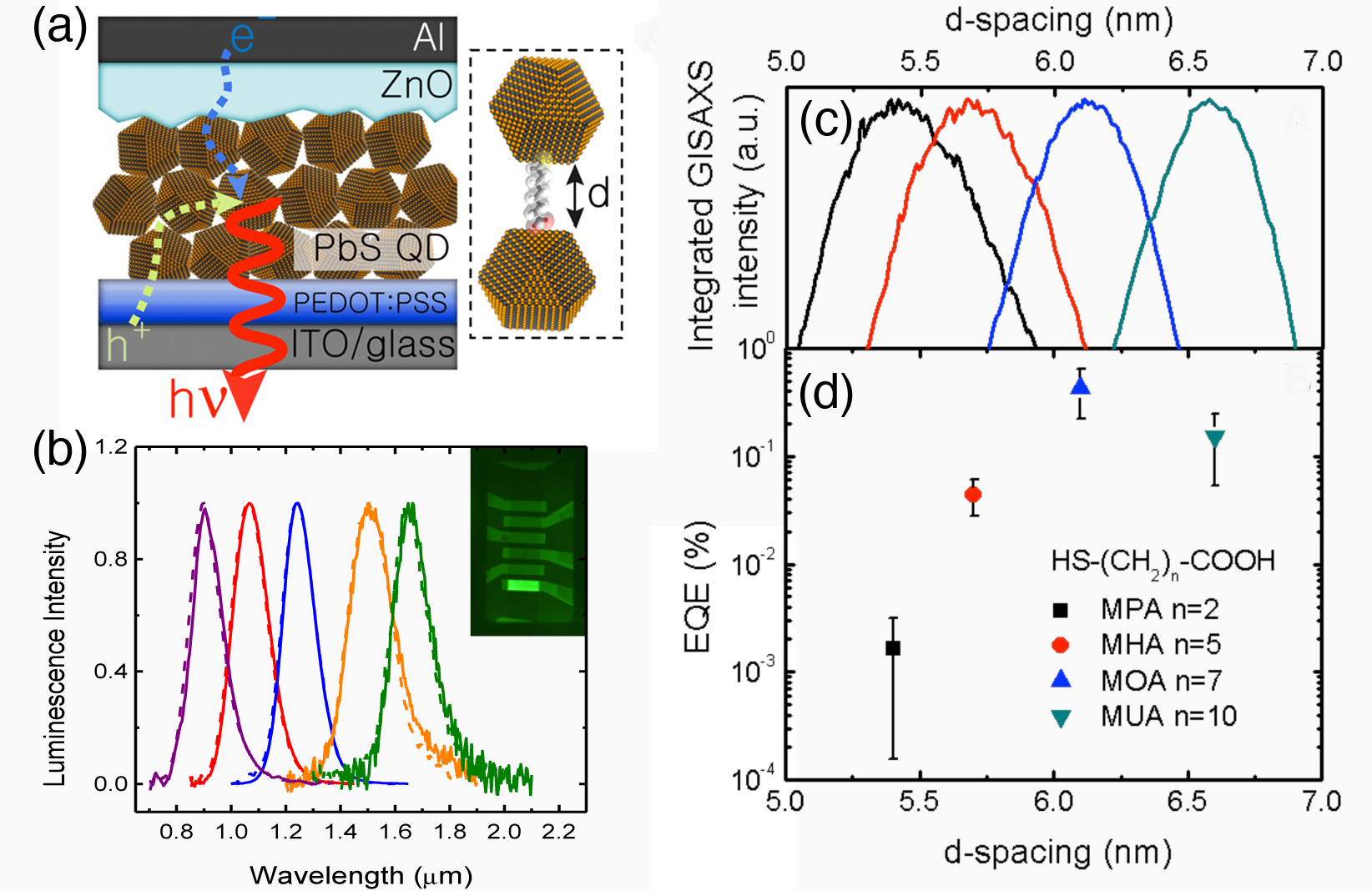X-RAY RUNS: Apply for Beamtime
2017 Nov 1 - Dec 21
2018 Feb 7 - Apr 3
2018 Proposal/BTR deadline: 12/1/17
2018 Apr 11 - Jun 4
2018 Proposal/BTR deadline: 2/1/18
The availability of colloidal quantum dots (QDs) with well-defined size and shape has created intriguing opportunities for scientists and engineers to create materials with properties by design. Colloidal semiconductor QDs have been proposed as building blocks for the development of solution-processed optoelectronic devices, including next-generation photovoltaics, photodetectors and light emitting diodes (LEDs). Bringing this much-heralded technological potential to fruition depends on nanoscale charge-carrier dynamics, which are poorly-understood and therefore poorly-controlled. Consequently, the performance of prototype devices has, so far, has been limited.
A paper by researchers at the Cornell applied physics, materials science, and chemical engineering departments recently published in Nature Nanotechnology reports a record-breaking colloidal QD infrared LED with brightness that is an order of magnitude higher than in the best infrared QD-device reported previously, and is comparable to the performance of existing infrared light emitters grown by planar epitaxial techniques. This record was enabled by the controlled and dramatic variation of the dissociation and recombination of excitons in QDs. Variable-length molecular linkers afforded the fine-tuning of inter-QD spacing which was measured by grazing-incidence small-angle X-ray scattering (GISAXS) at the D1 line at CHESS. This control of the exciton dissociation/recombination by adjusting the inter-QD electronic coupling allowed the collaborative team to dramatically improve the performance of the device. Remarkably, the results show that the efficiency of a QD thin-film LED can be improved by two orders of magnitude, while the spacing between adjacent QDs is adjusted by only a few angstroms.

(a) Schematic device structure of the QD-LED device. Electrons (holes) are injected from the ZnO/Al (PEDOT:PSS/ITO) contact. (b) Normalized electroluminescence (solid) and photoluminescence (dashed) spectra of LEDs made of different size QDs, all capped by mercaptohexanoic acid linkers. Inset: A photograph of a device emitting at 1244 nm taken by an InGaAs camera. The relation between quantum efficience (EQE) and the center-to-center distance between QDs in the film (measured by GISAXS) illustrates the optimum linker length (mercaptoctanoicd acid, MOA) for LED device performance. (c) Azimuthally integrated GISAXS intensity of QD films with varying linker length. (d) Quantum efficiency (EQE) dependence on the inter-QD distance.
Reference:
[1]
Liangfeng Sun, Joshua J. Choi, David Stachnik, Adam C. Bartnik,
Byung-Ryool Hyun, George G. Malliaras, Tobias Hanrath, and Frank W.
Wise; "Bright Infrared Quantum-dot Light-emitting Diodes Through
Inter-dot Spacing Control", Nature Nanotechnology (Online - DOI:
10.1038/NNANO.2012.63)
Submitted by: Detlef Smilgies, CHESS, Cornell University
05/11/2012
